
A smart card, chip card, or integrated circuit card is a physical electronic authentication device, used to control access to a resource. It is typically a plastic credit card-sized card with an embedded integrated circuit (IC) chip. Many smart cards include a pattern of metal contacts to electrically connect to the internal chip. Others are contactless, and some are both. Smart cards can provide personal identification, authentication, data storage, and application processing. Applications include identification, financial, public transit, computer security, schools, and healthcare. Smart cards may provide strong security authentication for single sign-on (SSO) within organizations. Numerous nations have deployed smart cards throughout their populations.
ISO/IEC 14443Identification cards -- Contactless integrated circuit cards -- Proximity cards is an international standard that defines proximity cards used for identification, and the transmission protocols for communicating with it.
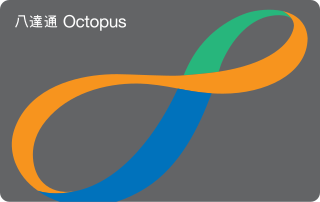
The Octopus card is a reusable contactless stored value smart card for making electronic payments in online or offline systems in Hong Kong. Launched in September 1997 to collect fares for the territory's mass transit system, it has grown into a widely used system for transport and other retail transactions in Hong Kong. It is also used for purposes such as recording school attendance and permitting building access. The cards are used by 98 percent of the population of Hong Kong aged 15 to 64 and the system handles more than 15 million transactions, worth over HK$220 million, every day.

A proximity card or prox card also known as a key card or keycard is a contactless smart card which can be read without inserting it into a reader device, as required by earlier magnetic stripe cards such as credit cards and contact type smart cards. The proximity cards are part of the contactless card technologies. Held near an electronic reader for a moment they enable the identification of an encoded number. The reader usually produces a beep or other sound to indicate the card has been read.

Near-field communication (NFC) is a set of communication protocols that enables communication between two electronic devices over a distance of 4 cm (1.57 in) or less. NFC offers a low-speed connection through a simple setup that can be used to bootstrap more capable wireless connections. Like other "proximity card" technologies, NFC is based on inductive coupling between two so-called antennas present on NFC-enabled devices—for example a smartphone and a printer—communicating in one or both directions, using a frequency of 13.56 MHz in the globally available unlicensed radio frequency ISM band using the ISO/IEC 18000-3 air interface standard at data rates ranging from 106 to 848 kbit/s.
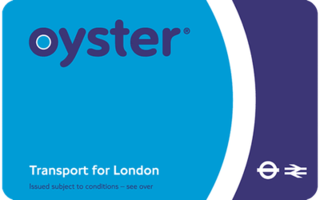
The Oyster card is a payment method for public transport in London in England, United Kingdom. A standard Oyster card is a blue credit-card-sized stored-value contactless smart card. It is promoted by Transport for London (TfL) and can be used on travel modes across London including London Buses, London Underground, the Docklands Light Railway (DLR), London Overground, Tramlink, some river boat services, and most National Rail services within the London fare zones. Since its introduction in June 2003, more than 86 million cards have been used.

SmarTrip is a contactless stored-value smart card payment system managed by the Washington Metropolitan Area Transit Authority (WMATA). The Maryland Transit Administration (MTA) uses a compatible payment system called CharmCard. A reciprocity agreement between the MTA and WMATA allows either card to be used for travel on any of the participating transit systems in the Baltimore-Washington metropolitan area. Unlike traditional paper farecards or bus passes, SmarTrip/CharmCard is designed to be permanent and reloadable; the term "SmarTrip" may refer to both payment systems unless otherwise noted.

The Beijing Municipal Administration & Communication Card, more commonly known as the Yikatong, is a stored-value contactless smart card used in Beijing, China, for public transportation and related uses. It is similar to Hong Kong's Octopus card, Singapore's CEPAS, The OMNY Card in New York City, United States, or the Oyster Card used by Transport for London in London, England.
The ICOCA card is a rechargeable contactless smart card used on the JR West rail network in Japan. The card was launched on November 1, 2003, for usage on the Urban Network, which encompasses the major cities of Osaka, Kyoto and Kobe (Keihanshin). It is now usable on many other networks. The ICOCA area has gradually been expanded, and now includes the San'yo region through the Okayama and Hiroshima urban areas, and some lines in northern Shikoku, San'in and Hokuriku regions as of 2020.
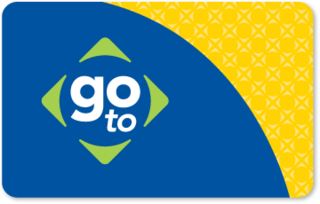
The Go-To card is a contactless smart card used to pay fares for bus, light rail, and commuter rail lines operated by Metro Transit and other transit agencies in the Twin Cities area of Minnesota. The system has significantly sped up boardings on area buses while alleviating wear and tear on existing ticket machines and fare boxes. The old magnetic strip reading machines were weather sensitive and could not be placed out in the elements like at the Hiawatha Line light rail stations.

Payment cards are part of a payment system issued by financial institutions, such as a bank, to a customer that enables its owner to access the funds in the customer's designated bank accounts, or through a credit account and make payments by electronic transfer with a payment terminal and access automated teller machines (ATMs). Such cards are known by a variety of names including bank cards, ATM cards, client cards, key cards or cash cards.

A contactless smart card is a contactless credential whose dimensions are credit-card size. Its embedded integrated circuits can store data and communicate with a terminal via NFC. Commonplace uses include transit tickets, bank cards and passports.
A datacard is an electronic card for data operations.

The ORCA card is a contactless, stored-value smart card system for public transit in the Puget Sound region of Washington, United States. The card is valid on most transit systems in the Seattle metropolitan area, including Sound Transit, local bus agencies, Washington State Ferries, the King County Water Taxi, and Kitsap Fast Ferries. It was launched in 2009 and is managed by the Central Puget Sound Regional Fare Coordination Project, a board composed of local transit agencies.
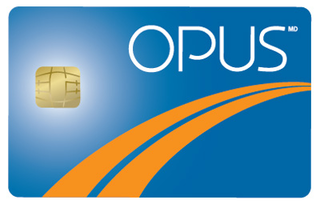
OPUS is a rechargeable, dual interface (contact/contactless) stored-value smart card using the Calypso Standard and is used by major public transit operators in Greater Montreal and Quebec City, Quebec, Canada. It complies with the ISO/IEC 14443 standard for smartcards, and can be read by smartphones with an NFC antenna.
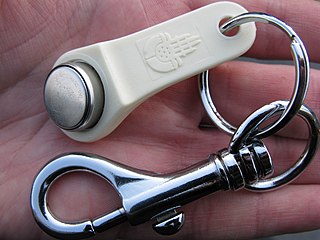
Akbil was an integrated electronic ticket system used for fare payment on public transport in Istanbul, Turkey, and was first issued in 1995. In 2009 it was replaced by the Istanbulkart; while existing Akbil tickets could still be used, new ones were no longer sold, and it was completely phased out 2015. It was valid for boarding buses, funiculars, LRT, metro, commuter trains, ferryboats and trams operated by the Metropolitan Municipality. Unlike payment by cash, the Akbil allowed a passenger to transfer service within the transportation network under some defined conditions. Akbil is a portmanteau formed from "akıllı", which stands for "smart", and "bilet" meaning "ticket".
CIPURSE is an open security standard for transit fare collection systems. It makes use of smart card technologies and additional security measures.
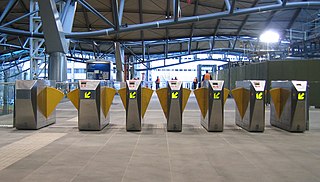
An automated fare collection (AFC) system is the collection of components that automate the ticketing system of a public transportation network - an automated version of manual fare collection. An AFC system is usually the basis for integrated ticketing.

MetroCARD is a contactless smartcard ticketing system for public transport services in the Adelaide city and suburbs in South Australia. The system is managed by Adelaide Metro and is usable on their bus, train and tram services.
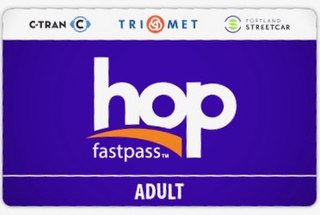
Hop Fastpass is a contactless smart card for public transit fare payment on most transit modes in the Portland, Oregon, metropolitan area including MAX Light Rail, WES commuter rail, Portland Streetcar, The Vine, and all TriMet and C-TRAN buses. An initial release to the general public began on July 5, 2017, with the official launch on July 17. The program is managed by TriMet.















